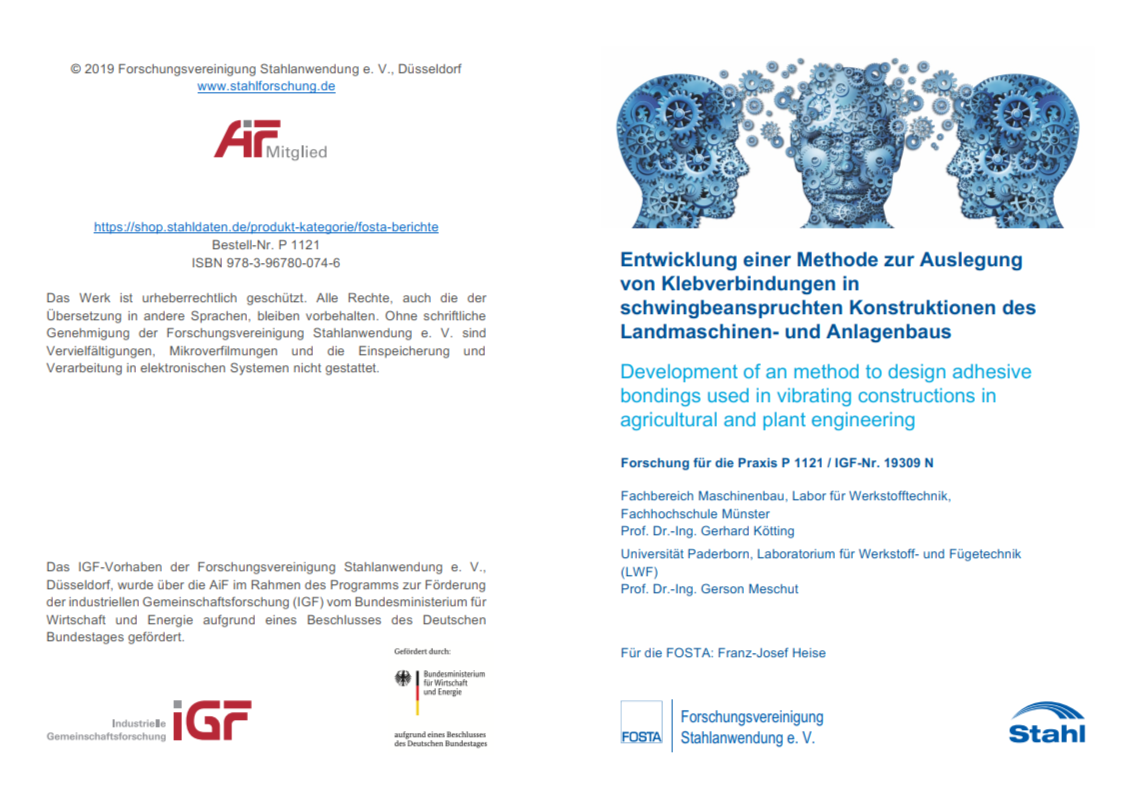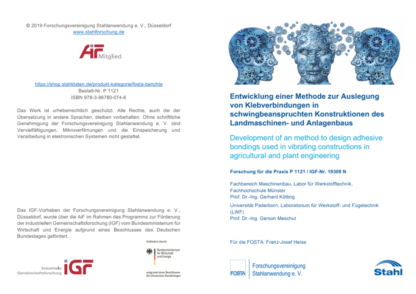Description
P 1121 – Development of an method to design adhesive bondings used in vibrating constructions in agricultural and plant engineering
In constructions made of thicker sheet steel (approx. 3- 8 mm) in agricultural machinery and plant construction adhesive bonding is so far only used to a limited extent, although it is already an established joining method in other areas of application. Bonded joints are generally characterised by excellent behaviour under vibration loading, which has also been demonstrated in a previous SME study (FOSTA) on thicker steel sheets in random sample tests. The essential aims of this project are:
- Experimental examination of strength behaviour of bonded joints made of thicker steel sheet using high strength steels.
- Comparison of strength behavior of bonded and welded joints.
- Formulation of a procedure for the systematic development of structural adhesive joints as an alternative for welded connections.
At the start geometries of welded joints, which are typical in agricultural machinery and plant construction, are analysed and rated for feasibility into welded joints. For subsequent component tests a bracket connection was selected as a bonded sample component.
In the run-up the strength behavior of bonded lap joints were examined under quasistatic load and following in Wöhler- and in operational stability tests. The influences of media and corrosion were included. It was shown, that welded joints perform clearly better than adhesive joints under quasi-static load. However the strength of adhesive joints can be raised by using high strength adhesives The potential of structural bonded joints is located in the high-cycle-fatigue-sector. Because of obvious less notch effect fatigue behavior is considerably favorable compared to welded joints above nearly 105 bis 106 load changes. The high fatigue resistance determined for lap joints was also obvious in the case of the bonded samples (bracket connections) if the joint area is adequate stiff. The influences of media and corrosion must be taken into account by seam sealing.
The strength of high-strength steels under cyclic loading can be more efficiently exploited by bonding compared to welding, and thus higher degrees of lightness can be achieved by reducing wall thickness. To ensure handling stability during production mechanical fastening methods (blind riveting inter alia) with one-sided and two-sided accessibility are examined and evaluated. In conclusion recommendations are drafted for the methodical development of structural bonded joints in agricultural machinery and plant construction. Based on the experimental results a concept is presented to determine the Wöhler curve of components and hers operational stability with nominal shear stresses following the FKMguidelines.
Published in:
2019
Authors:
Prof. Dr.-Ing. G. Kötting, Prof. Dr.-Ing. G. Meschut




